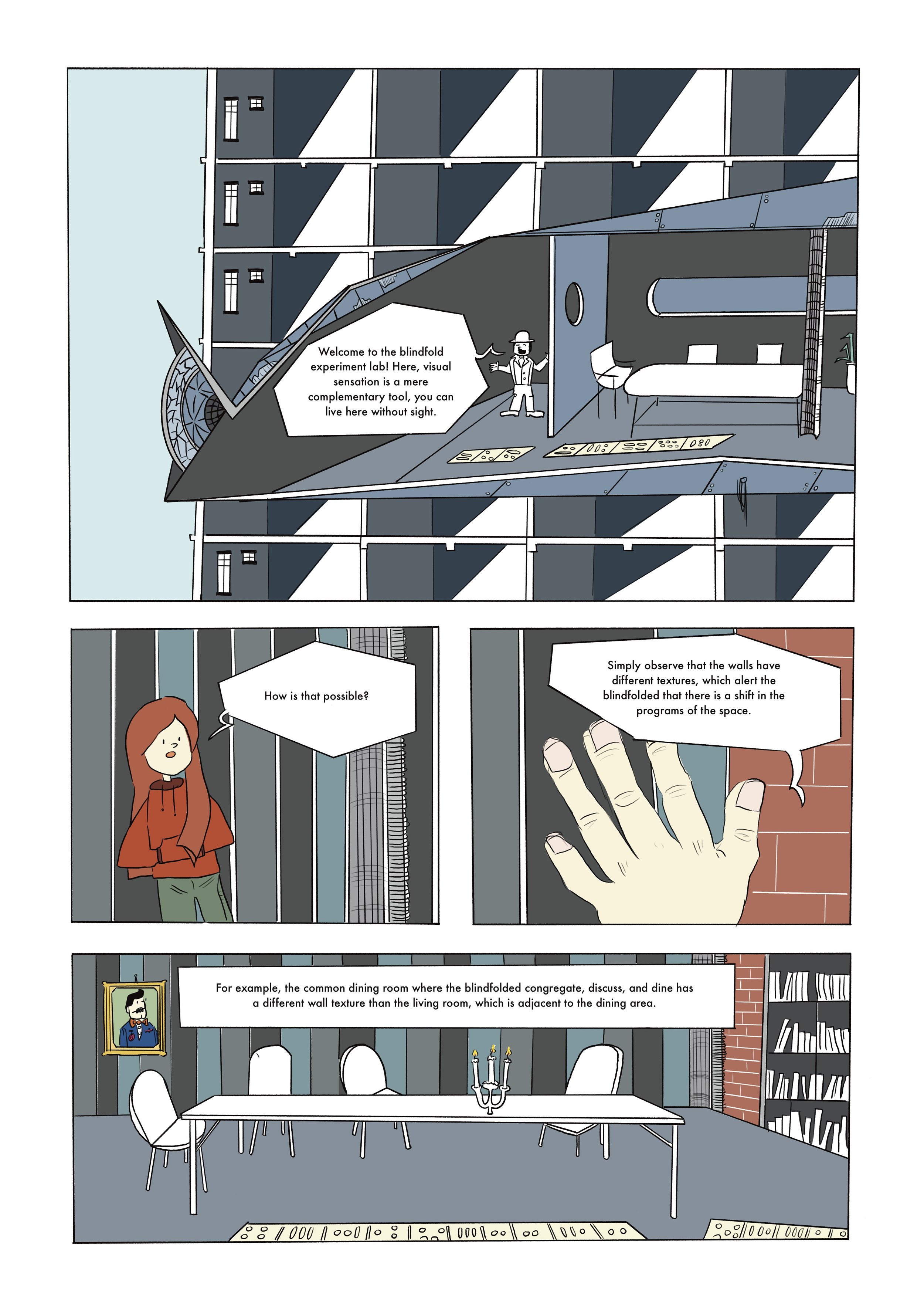Buildings, like locomotives, are not merely utilitarian. What’s the good of new technological progress if they do not invoke a new great enthusiasm? Likewise, if buildings do not contribute to the transformation of man, then our job is only half done.
That is not to say that only big gestures of built-from-scratch designs can change our way of living. Rather, small and incremental changes prove to be the most effective in influencing our most intimate way of living, as they infiltrate and permeate most thoroughly into our immediate surroundings. The contemporary design turns a passive lived shell into a living and responsive living organism. Ideally, these incremental design interventions can be applied to any existing housing/site, no matter how rigidly compartmentalized they were before.
The final main deliverable of my thesis is a set of detailed diagrams of the incremental interventions plus a user-case scenario set of illustrations (comics) demonstrating the possible interactions between the inhabitants and space.
The goal of my thesis is to encourage communal activities and a sense of a tighter community through the manipulation of the designs of existing buildings. My preliminary work works closely with precedents from the Soviet Constructivist movement. I identified translatable design interventions for my site in contemporary Taiwan for the same goal— to create a new synthesis between new forms and new programs.
To show how I arrived at my design and how the new design interventions spark a more lively interaction among residents, the final product of my thesis, along with physical models and diagrams of my designs, is a set of illustrations that help to illustrate possible user case scenarios. The final pamphlet will include my writing alongside illustrations of my design interventions.








